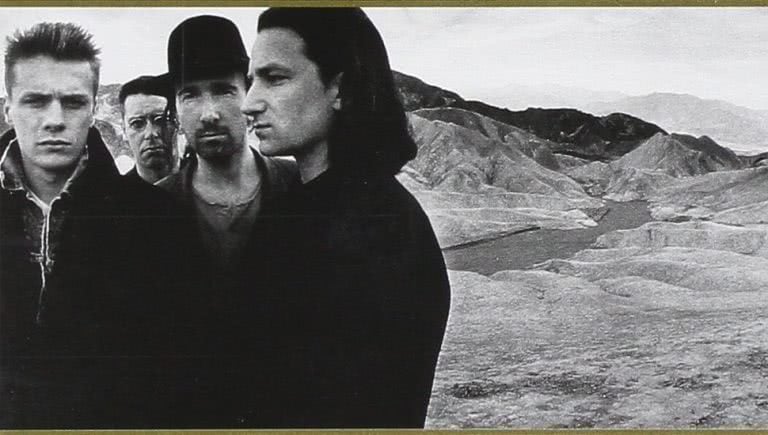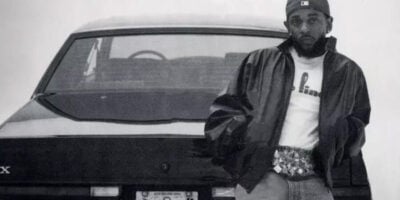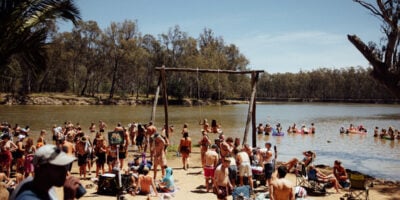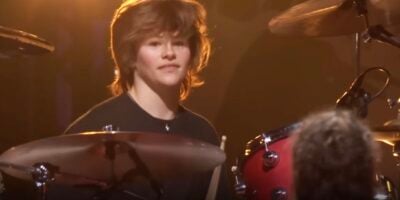Let’s go back to a magical moment in time when mobile phones didn’t exist, Justin Bieber was not born yet, and a rock’n’roll band from Dublin ruled the world.
If we think about it, maybe it would be easier for a time traveler from the ’80s to adapt to our days than for us to go back. Today, Child’s Play, It, Rick Astley and Johnny Depp are miraculously still around. Star Wars and high-cut swimsuits are all the craze, there’s a Watchmen series coming out, and a new ’80s throwback song breaks into the charts almost every other week.
On the other hand, for us, going back to the ’80s would feel like being thrown right into the Stone Age. Imagine life with no social media to vent out our frustration with the last season of Game of Thrones. No LOLs, no heart-eyes emoji, no cat videos. No free porn.
Picture yourself having to actually go to a store and buy one of those archeological artefacts known as CDs. Imagine listening to music with no advertisements at 44.1 KHz/16 bit sampling frequency. The horror, the horror.
The ’80s: Context
Despite the ’80s not being so far away, the world was certainly very different back then. There were around five million people on the planet — over two billion less than today —, the Soviet Union still existed and there were two Germanys.
The Reagan administration was immersed in the Iran-Contra scandal, over at the British Isles The Troubles were at boiling point, and the infamous “Black Monday” stock market crash left the world’s economy hanging by a thread.
In 1987, Kendrick Lamar and Lionel Messi were born. The first ever Rugby World Cup kicked off at Eden Park with New Zealand vs Italy, and a 19-year-old Kylie Minogue released ‘Locomotion’ and ‘I Should Be So Lucky’.
In a music industry where autotune didn’t exist, — it came into use until the late ’90s — lists were dominated mainly by four genres; pop music, hip-hop, New Wave and Glam Metal.
The apparition of MTV in 1981 changed the business forever, introducing the visual aspect of an artist as an inseparable part of their output. This brought upon a new breed of mega-stars the world had not seen since Elvis Presley and The Beatles.
Stars like Michael Jackson, Madonna, and Prince were not only extremely talented performers but massively charismatic personas that defined fashion trends and generated a cult of personality. Still today, the gargantuan success of pop artists in the ’80s is the benchmark against what today’s performers are measured.
And among this constellation of scintillating supernovas, stood four earnest Irishmen that didn’t do dance choreographies, wore no wigs, and created tunes that didn’t fit any of the dominating genres of the time.
Listen to U2’s ‘In God’s Country’ below:

There are many reasons why today U2 is one of the music industry’s favourite targets
In a time when complaining, self-importance, self-entitlement and faux outrage have become the world’s favourite pastime, music fans, the press and even those with no interest in the band had all found a reason to bash them.
Their astronomic success has made of U2 pariahs amidst a section of radical indie fans who can’t forgive them for going from an experimental post-punk outfit into a global dancefloor sensation. On the other hand, their stance as a politically and socially conscious act has earned them the label of hypocrites and “social justice warriors” among the, let’s say, most “opinionated” factions of the internet.
Sum to that an inconsistent output over the last two decades, with albums that contain as many brilliant masterpieces as uninspired saccharine clunkers. And let’s not even talk about that overblown mess with the iTunes release of their album Songs of Innocence in 2014.
Amidst all the noise, it’s easy to forget that they dominated the music world between 1983 and 2004, selling more than 150 million records and producing three of the best albums of all time; The Unforgettable Fire (1984), Achtung Baby (1991), and the gem we’re going to revisit here, The Joshua Tree, released in 1987.
Up to that point U2 had sold a healthy amount of records, but their forte was definitively playing live. They toured extensively throughout the U.S and had earned a reputation as one of the hottest live acts of the decade.
In March of 1985, Rolling Stone Magazine made a cover story calling U2 the “Band of the ’80s.” Later that year they impressed with their energetic performance at Live Aid where they played a 12-minute chaotic rendition of ‘Bad’ in which the band improvised while Bono went off script and jumped off the stage to dance with a fan.
Watch U2 perform at Live Aid in 1985:

The Joshua Tree transformed U2
Things were going just fine for the Irish rockers, but everything went to a whole different level following the release of The Joshua Tree. That album transformed them from a band that sold out arenas in the U.S. into an international entertainment brand capable of filling an entire stadium anywhere in the globe.
After 1987, U2 became more than just rockstars, they turned into relevant voices in the world stage. That famous front cover on Time Magazine, vacations with the Obamas, Bono rubbing elbows with UN diplomats, it all started here.
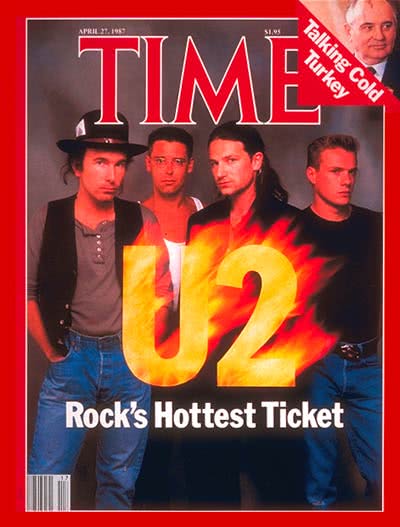
Throughout their career, the band always looked for physical spaces with an aura of mysticism about them to produce their albums. Their second outing, October was composed in a music room at Mount Temple, the school where they first met as teens.
To record The Unforgettable Fire, U2 picked legendary Slane Castle. Sun Studios in Memphis held recording sessions for Rattle and Hum, and Hansa Tonstudio was chosen for Achtung Baby.
The approach to The Joshua Tree was no different. To record their fourth album, producers Daniel Lanois and Brian Eno decided to repurpose a monumental 18th Georgian house in Rathfarnham, Ireland, — house that bass player Adam Clayton later ended buying — located in the foothills of the Wicklow Mountains.
Although they didn’t want to let go completely of the ambient experimentation that was so successful in their previous album The Unforgettable Fire, their main objective this time around was to create songs with more conventional structures.
Curiously, the result was a bit more unorthodox than what they originally planned for. What they ended up with was a sort of futuristic gospel album that sounds like nothing that was playing on the radio at the time.
Watch U2’s clip for ‘I Still Haven’t Found What I’m Looking For’:

The United States and Ireland have tight bonds that go way back to the first wave of Irish migration in the 17th Century. Throughout history, Irish culture has influenced America greatly, but with The Joshua Tree, it’s the other way round.
U2 appropriates gospel, blues, John Coltrane, The Memphis Sound, Elvis Presley, and even borrows elements from American literature, particularly the New Journalism movement.
The whole album reads like a heartfelt homage to the United States, but one that is not self-complacent, gratuitous or servile. The band proudly roars their praise to the cultural riches, natural beauty, and vibrancy of the land of the free, but pulls no punches when it comes to exposing the ugly side of the American dream, that of hypocrisy, poverty, foreign intervention, fanaticism, and violence.
In a sense this album and its successor, Rattle and Hum can be seen as the band documenting a road trip through The United States while they discover, and at the same time dismantle, the myth of America.
One of the unreleased songs of the album that was later included in the 20th anniversary remaster is a track titled ‘Drunk Chicken’ in which the band provides an instrumental background to Allen Ginsberg reciting his iconic poem ‘America’.
That poem right there encapsulates the whole spirit of the album, and probably of U2’s whole career.
America I’ve given you all and now I’m nothing.
America two dollars and twenty-seven cents January 17, 1956.
I can’t stand my own mind.
America when will we end the human war?
Go fuck yourself with your atom bomb.
I don’t feel good don’t bother me.
I won’t write my poem till I’m in my right mind.
America when will you be angelic?
When will you take off your clothes?
When will you look at yourself through the grave?
When will you be worthy of your million Trotskyites?
America why are your libraries full of tears?
Listen to U2’s track ‘Bullet The Blue Sky’:

Musically, the album is the epitome of U2’s distinctive sound
Effect-heavy guitars that feel like silver being sprinkled from the sky over a thumping rhythm section that sounds like a military band marching into battle.
The Edge has always been a different strain of guitar hero, one who instead of shredding at the slightest opportunity, is more focused on creating weird sounds, atmospheres, and unique textures. In The Joshua Tree, he runs amok with his trademark syncopated melodies and delay effects, traits that today are as idiosyncratic to U2 as Bono’s sunglasses.
Another of the quintessential characteristics of U2 is being able to tackle the mundane and the transcendent so adeptly you can’t even tell the difference. The Joshua Tree seemingly jumps from intimate declarations of love, like ‘With Or Without You’, to the harrowing exposition of political atrocity in ‘Mothers of the Disappeared’.
This is a band that is capable of blasting a joyous spiritual anthem like ‘I Still Haven’t Found What I’m Looking For’ and then hit us with a painful tale of personal loss like ‘One Tree Hill’, and in both cases, tug at our heartstrings just as effectively.
During the ’80s Bono hadn’t perfected the distinctive falsetto he’s known for today. His preferred style back then was to explode with a powerful open voice which he decorated with little imperfections like sighs and deep breathing that gave to his performances a visceral, raw feel.
In retrospect, one can see the enormous risk this album was. This is a record that doesn’t sound like anything playing on lists at the time. It doesn’t have anything in common with hair bands like Motley Crüe or Poison, nor is their sound constructed around synthesisers like most pop did at the time. It isn’t quite New Wave either.
U2 has been so overplayed, today we think of them as the ultimate example of 80s sound. But if we compare it to what was going on at the time, there wasn’t anything like them.
Even their image was completely out of tune. While popular acts relied on costumes, heavy makeup and dancing antics for their shows and videos, U2 trusted Dutch photographer Anton Corbijn, who rendered the band in melancholic, gloomy black and white pictures where they’re always standing in the middle of desolate landscapes staring into the horizon with an expression of grief. Not particularly a concept that screams “mass appeal”.
While wearing their heart on their sleeve is one of those characteristics that some find insufferable about the Irish band, on The Joshua Tree they managed to create an experience that even for someone like me that’s not spiritual at all, feels like plunging your feelings in a sauna.
There’s just something about the album that washes your pain away and works like soul bleach. At times it’s a loving, emotional pledge to unity and in others, it serves as a militant call to arms that reminds me of that famous label on Woody Guthrie’s guitar; “This machine kills fascists”. Not that U2 is capable of defeating hate on its own, but it sure as hell tries.
Almost universally revered at the time of its release, the record is frequently mentioned as one of the best ever made, and in 2014 it was selected for preservation in the National Recording Registry by the US Library of Congress.
To celebrate the 30th anniversary of what could be considered the best work in their career, U2 embarked in 2017 in a massive concert tour through stadiums across Europe, North and South America. Good news is, earlier this year the band announced they would play an encore run in Australia and Asia this November and December.
The shows will mark their first concert in Australia since 2010, and their first performance ever in South Korea and Singapore. Rock ’n’ roll aficionados, fans of good music, or simple casuals that enjoy a grand spectacle, this will be a once in a lifetime opportunity to experience live one of the musical milestones of the 20th century. It would be almost blasphemy to miss it.
“It’s only taken me 30 years to learn how to sing these songs and it’s great to be able to say that I’ve finally caught up with the band,” Bono said in a press statement. “Auckland, Brisbane, Melbourne, Adelaide, Perth, Sydney, Tokyo, Singapore, Seoul… We’re coming for you.”
Watch the aftermovie for U2’s The Joshua Tree Tour 2017:

U2 ‘The Joshua Tree’ Tour
With Noel Gallagher’s High Flying Birds
12 November
Brisbane, Suncorp Stadium
15 November
Melbourne, Marvel Stadium
19 November
Adelaide, Adelaide Oval
22 November
Sydney, Sydney Cricket Ground
27 November
Perth, Optus Stadium
Click here for tickets and more information































